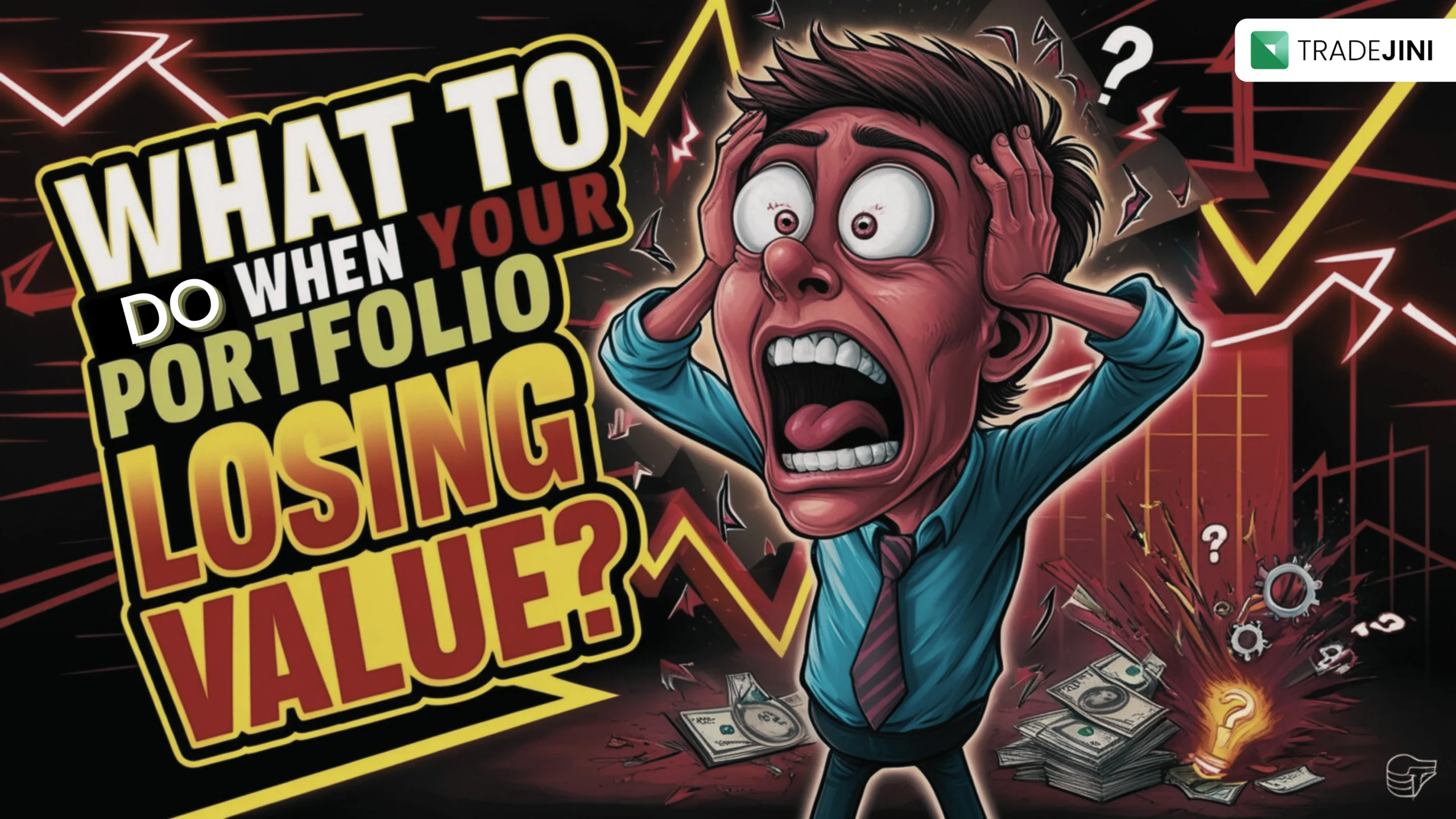Making money in the market can be very straightforward and sometimes quite rapid, turning ₹1000 into ₹10000 in a day or two. However, it's equally easy and quick to lose ₹1,00,000.
You save your hard-earned money and use it to invest in the market, expecting good returns, if not beating the inflation rate, but instead of all this, you see your investments go all in red and you are not able to even withdraw or exit as you cannot bear the amount of loss it indicates.
Portfolio rebalancing is the process of realigning the weightings of your assets to ensure they align with your risk tolerance and investment objectives. Over time, market fluctuations can cause your portfolio to drift from its original allocation, potentially exposing you to unintended risks. By periodically assessing and adjusting your investments, you can mitigate these risks, capitalize on growth opportunities, and maintain a diversified portfolio that is better equipped to weather market volatility. Understanding and implementing portfolio rebalancing is a vital strategy for any investor seeking to optimize their financial outcomes and sustain growth over time.
It is always important to remember that investing is a journey with ups and downs. If you're facing challenges right now, here are some tips to help you navigate through them.
To start with, the very first thing to do is to track what caused the loss. There can be several reasons out there, such as economic trends, poor diversity or allocation of funds, wrongly timing the market, etc.
Reasons for a Declining Portfolio
Insufficient Conservative Holdings
Holding only one type of investment in your portfolio, particularly during a market downturn, can lead to significant losses. For instance, if your portfolio consists solely of stocks, you may experience steep declines during bear markets. Similarly, bond-heavy portfolios could suffer in times of rising interest rates. Diversifying across asset types (such as equities, bonds, and commodities) helps manage risk and provides some insulation from specific market conditions.
Lack of Diversification
Another reason your portfolio might be in the red is insufficient diversification. A well-diversified portfolio spreads risk across different sectors, asset classes, and geographies. If one asset class or sector declines, others may remain stable or even rise, helping to offset overall losses. It’s critical to ensure your investments are spread across equities, bonds, commodities, and even real estate or international markets to reduce risk.
Inefficient Fund Distribution
Investing in funds or assets that don’t align with your goals or risk tolerance can hurt your portfolio. For instance, if you are saving for retirement and prefer a conservative approach, but invest in aggressive growth funds based on recent high returns, you may experience losses during market corrections. It’s important to match your investments with your time horizon and risk appetite.
Sub optimal Investment Strategies and Timing
Using the wrong investment strategy or mistiming the market can lead to underperformance. For example, buying stocks at their peak (when they’re overvalued) means you might have to wait years for them to recover after a market correction. Rather than trying to time the market, a better strategy might be dollar-cost averaging—consistently investing a fixed amount over time, regardless of market conditions.
High-Risk Investment Choices
If your portfolio contains high-risk investments, such as penny stocks or options, you should expect volatility. These investments can experience rapid and unpredictable price swings, which may significantly impact the value of your holdings. While some investors may thrive on the potential for high rewards, it’s important to limit your exposure to high-risk assets to avoid major portfolio losses.
Challenging Economic Environment
Market downturns can be unpredictable and complex. Sector trends often drive collective stock movements. When one sector grows, it can lift others, leading to overall market movements. It's crucial to monitor how your investments perform relative to each other to identify when to sell certain stocks to prevent them from weighing down your portfolio.
Now that you have tracked the reason, we will look into what can be done to get your portfolio back on the green side.
Also Learn: How Panda Diplomacy Works: China's Adorable Ambassadors in Global Relations
8 Rules to Remember When Your Portfolio Is Down
In addition to these, there are other tactics that we can use to prevent losses:
Knowing Your Assets
Understanding the purpose of each asset in your portfolio is crucial. Every stock or fund should serve a specific role—whether it’s growth, income, or diversification. Before selling any stock, ensure that it has fulfilled its purpose or no longer aligns with your goals.
Debt-Averse Investing
Companies with heavy debts are riskier during economic downturns. These firms often have limited flexibility and can face greater financial strain, which could affect your portfolio if you hold such stocks.
Counting the Costs
Commissions and charges are to be calculated before selling any assets to check whether it is the right time to sell the asset, as sometimes you have to be cautious that these are not eating up your profits.
Assessing Risk Tolerance
Knowing your risk tolerance helps you invest wisely. Conservative investors should avoid riskier assets like high-volatility stocks, while aggressive investors may be willing to accept short-term losses for long-term gains. Your investment choices should match both your financial situation and emotional comfort with risk.
Portfolio Performance Check
Scanning through your portfolio to understand if there are any stocks that are overbought, basically means you have better places to invest the sum of money, which could either be in Bonds, FDs, currency, etc.
Conclusion
Investing is a marathon, not a sprint. While market downturns are inevitable, you have the power to influence your portfolio’s long-term health. By staying calm, analyzing the reasons behind your losses, and implementing the strategies outlined here, you can turn setbacks into valuable learning experiences, ultimately building a stronger and more resilient portfolio.
Also Read: Understanding Implied Volatility (IV) in Options: How It Works and Examples





